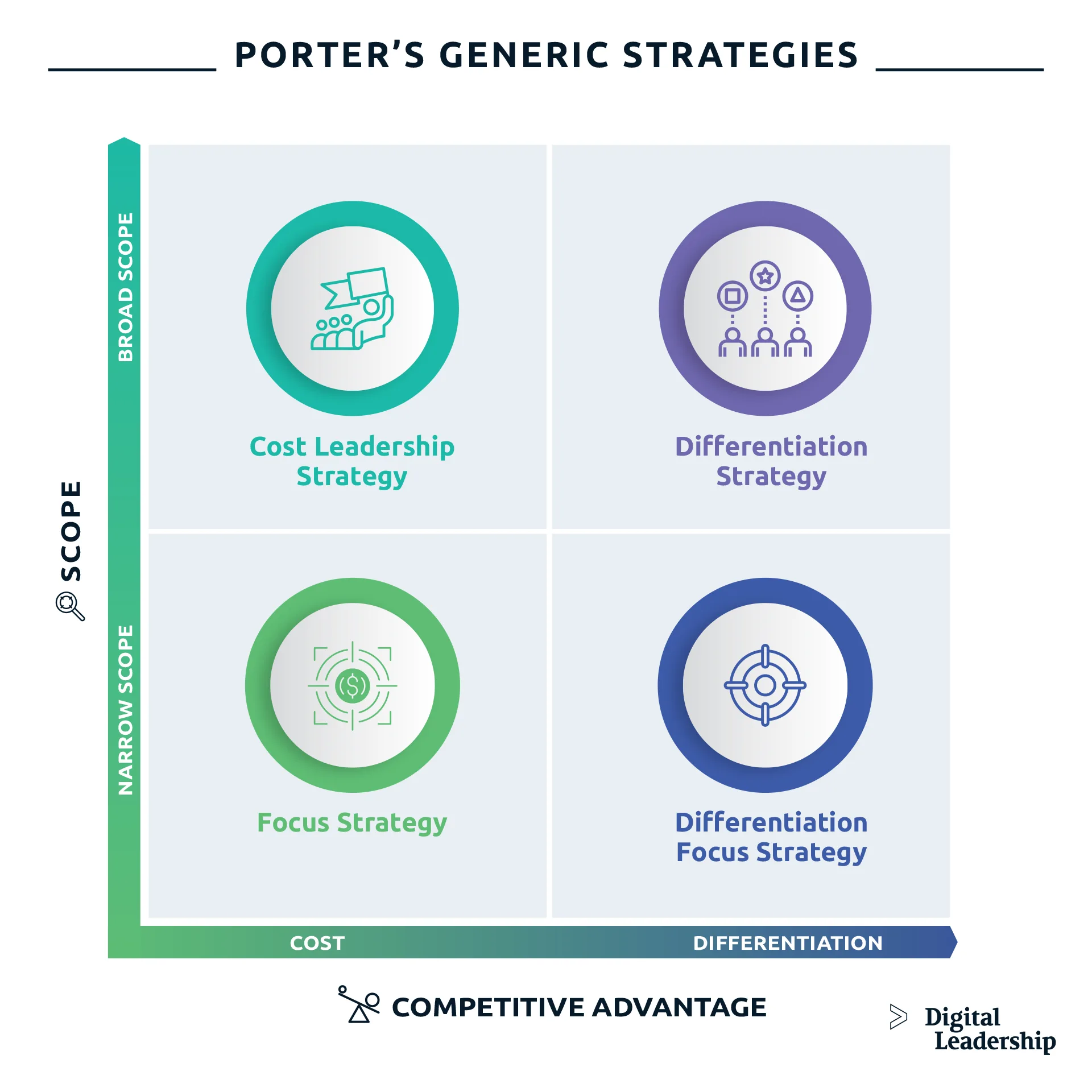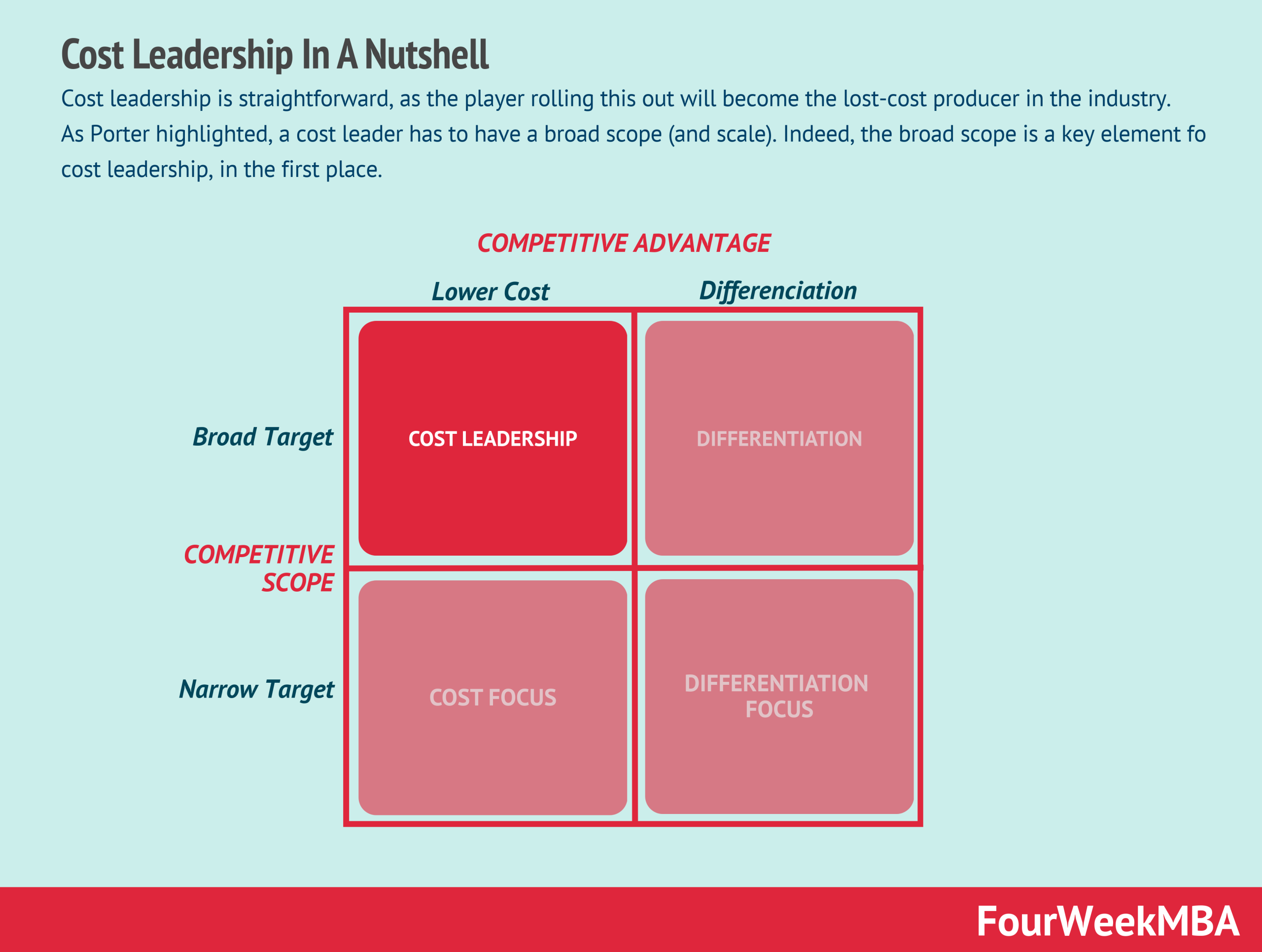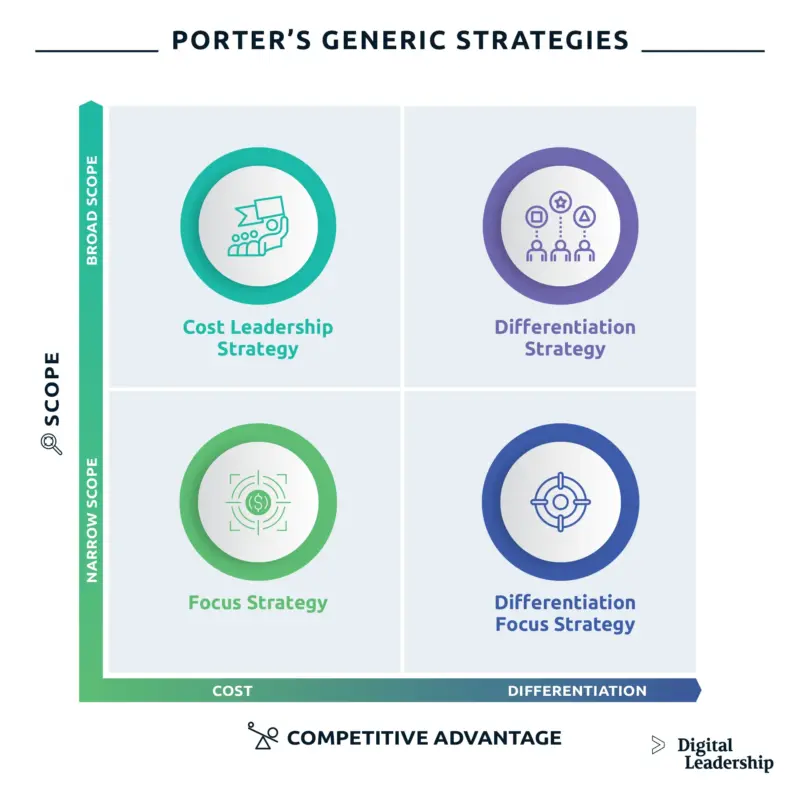Cost Leadership Strategy: Achieving Competitive Advantage Through Cost Efficiency
In todays fiercely competitive market, cost leadership is a pivotal strategy that businesses leverage to gain a sustainable edge over their competitors. By minimizing costs and maximizing efficiency, companies can offer lower prices while maintaining profitability. This article delves into the intricacies of the cost leadership strategy, highlighting its definition, importance, implementation steps, and real-world examples of successful application.

Understanding Cost Leadership Strategy
Definition of Cost Leadership
Cost leadership is a competitive strategy where a company aims to become the lowest-cost producer in its industry. By reducing operational costs, a firm can offer lower prices than its competitors, making it attractive to price-sensitive customers. This strategy is particularly effective in markets where price competition is intense.
Key Features of Cost Leadership
- Operational Efficiency: Achieving operational efficiency is paramount for cost leadership. This includes streamlining processes and optimizing resource allocation to minimize waste.
-
Economies of Scale: As companies increase production, they benefit from economies of scale, which allow them to lower per-unit costs by spreading fixed costs over a larger volume of goods.
-
Cost Control: Implementing stringent cost control measures is crucial. Companies must closely monitor expenses and identify areas for potential savings.
-
Standardization: Many cost leaders adopt a standardized product or service offering to simplify production processes and reduce costs.
Importance of Cost Leadership Strategy
The significance of a cost leadership strategy cannot be overstated. Companies that successfully implement this strategy can achieve several key benefits:
- Increased Market Share: By offering lower prices, businesses can attract a larger customer base, increasing their overall market share.
-
Enhanced Profit Margins: Even with lower prices, a well-managed cost structure allows companies to maintain healthy profit margins.
-
Competitive Advantage: In industries where competition is fierce, cost leadership provides a significant advantage, enabling firms to survive price wars and market fluctuations.
Steps to Implement a Cost Leadership Strategy
Implementing a successful cost leadership strategy requires a systematic approach:
1. Conducting a Cost Analysis
A comprehensive cost analysis is the first step toward achieving cost leadership. Companies must assess every aspect of their operations to identify where costs can be reduced. This involves analyzing raw materials, labor, and overhead expenses.
Quote: “What gets measured gets managed.” Peter Drucker
2. Streamlining Operations
To streamline operations, businesses can implement lean manufacturing techniques. Lean principles focus on delivering value to customers while minimizing waste. This might include improving workflow, reducing cycle times, and optimizing supply chain management.
3. Economies of Scale
Companies should strive to increase production capacity to leverage economies of scale. By producing more, fixed costs such as rent, utilities, and administrative salaries can be spread over a greater number of units, leading to lower costs per unit.

4. Leveraging Technology
Investing in technology can dramatically improve efficiency and reduce costs. Automation, for example, can streamline production processes, reducing the need for manual labor and minimizing human error. Embracing digital tools also facilitates better inventory management and operational transparency.
Challenges in Adopting a Cost Leadership Strategy
While cost leadership offers significant advantages, it also presents challenges:
1. Quality Concerns
One major challenge is maintaining product quality. The focus on cost reduction may lead to compromises in quality, which can alienate customers. Businesses must ensure that they do not sacrifice quality in their quest for lower costs.
2. Market Saturation
In highly competitive markets, maintaining low costs while attracting new customers can be challenging. Companies must continuously innovate and differentiate their offerings to stand out from competitors.
3. Competitive Responses
Competitors may react to a companys cost leadership by introducing their own lower-cost products or enhancing their offerings. This necessitates a proactive approach to maintain a competitive edge.
Real-World Examples of Successful Cost Leadership Strategies
1. Walmart: Low-Cost Retailing
Walmart exemplifies a successful cost leadership strategy by utilizing its extensive supply chain and operational efficiencies to offer low prices to consumers. Through bulk purchasing and efficient inventory management, Walmart has become a leader in the retail industry.
2. Southwest Airlines: Cost-Effective Operations
Southwest Airlines operates on a cost-leadership model by utilizing a point-to-point route system and maintaining a single aircraft type. This operational simplicity allows the airline to keep costs low, enabling them to offer competitive fares.
3. IKEA: Cost Leadership in Furniture Retail
IKEA utilizes a unique business model that focuses on self-service and flat-pack furniture. This approach minimizes costs associated with warehousing and transportation, allowing IKEA to pass on savings to customers.
Measuring the Effectiveness of Cost Leadership Strategy
To ensure the success of a cost leadership strategy, companies must measure its effectiveness through various metrics:
- Key Performance Indicators (KPIs): Monitoring KPIs such as cost per unit, overall profitability, and return on investment can provide insights into the strategys success.
-
Customer Satisfaction Metrics: Understanding how customers perceive value relative to price is crucial. Surveys and feedback mechanisms can help gauge customer satisfaction.
-
Market Share Analysis: Tracking changes in market share can indicate whether the cost leadership strategy is successfully attracting more customers.
Conclusion
As markets evolve, companies must adapt their strategies to maintain cost leadership. By focusing on operational efficiency, economies of scale, and leveraging technology, businesses can not only achieve but also sustain their competitive advantage in the marketplace. The future of cost leadership lies in balancing cost reduction with quality and innovation, ensuring long-term success.
In the second half of this article, we will delve deeper into the practical implementation of cost leadership, including potential pitfalls, innovative technologies that support cost reduction, and future trends in cost leadership strategies.
Practical Implementation of Cost Leadership Strategy
While establishing a cost leadership strategy may seem straightforward, its successful implementation requires a deep understanding of both the internal processes and the market environment. Here are several key factors to consider as you work toward achieving cost leadership:
1. Fostering a Culture of Cost Efficiency
Creating a corporate culture that prioritizes cost efficiency is crucial. Employees at every level should understand the importance of cost control and be empowered to suggest improvements. Here are a few ways to cultivate this culture:
- Training and Development: Regular training programs can help employees understand cost-saving methods and the significance of operational efficiency.
-
Recognition Programs: Implement incentive programs that reward employees for innovative cost-saving ideas. Recognizing their contributions can motivate them to continue seeking efficiencies.
2. Utilizing Technology for Cost Reduction
In the digital age, technology plays a pivotal role in cost leadership. Companies should embrace various technological advancements to streamline operations:
- Automation: Automated processes can significantly reduce labor costs and minimize human errors. For instance, utilizing robotics in manufacturing can speed up production while maintaining consistency.
-
Data Analytics: Employing data analytics can help identify inefficiencies within operations. By analyzing spending patterns and operational workflows, businesses can uncover hidden costs and areas for improvement.

3. Supply Chain Optimization
A well-optimized supply chain is essential for maintaining a low-cost structure. Companies can achieve this through:
- Supplier Negotiations: Establishing strong relationships with suppliers can lead to better pricing and terms. Negotiate bulk purchasing agreements to further reduce costs.
-
Inventory Management: Implementing just-in-time inventory systems can help reduce holding costs while ensuring that production is not disrupted. Efficient inventory management also helps mitigate the risks of overstocking or stockouts.
4. Continuous Improvement Process
Continuous improvement is vital in maintaining cost leadership. Companies must regularly evaluate their processes to ensure they remain competitive. Heres how to implement continuous improvement:
- Kaizen Methodology: Adopt the Kaizen philosophy, which emphasizes continuous, incremental improvement. Encourage teams to regularly assess their workflows and propose enhancements.
-
Feedback Mechanisms: Establish channels for employee feedback to identify inefficiencies. Regularly review feedback and act on feasible suggestions.
5. Balancing Cost with Quality
One of the biggest challenges in pursuing cost leadership is maintaining the quality of products or services. Here are strategies to ensure quality is not compromised:
- Quality Control Systems: Implement robust quality control measures to ensure products meet established standards. Regular audits can help identify areas needing improvement.
-
Supplier Quality Assurance: Work closely with suppliers to ensure that raw materials meet quality specifications. This collaboration can prevent quality issues from arising down the production line.
Future Trends in Cost Leadership Strategy
As businesses evolve, the landscape of cost leadership is also changing. Here are some trends to watch for:
- Sustainability Initiatives: Companies are increasingly focusing on sustainability as a cost-saving measure. Reducing waste not only lowers costs but can also enhance brand reputation and customer loyalty.
-
Digital Transformation: The adoption of digital tools for operational efficiency is accelerating. Companies leveraging technologies like artificial intelligence and machine learning are better positioned to reduce costs and improve decision-making.
FAQs about Cost Leadership Strategy
Q1: What is the primary goal of a cost leadership strategy?
The primary goal of a cost leadership strategy is to become the lowest-cost producer in the industry, allowing the company to offer lower prices and attract a larger customer base while maintaining profitability.
Q2: Can small businesses implement a cost leadership strategy?
Yes, small businesses can successfully implement a cost leadership strategy by focusing on niche markets, optimizing their operations, and leveraging technology to enhance efficiency.
Q3: How can a company maintain quality while pursuing a cost leadership strategy?
A company can maintain quality by implementing strict quality control measures, collaborating closely with suppliers, and adopting continuous improvement practices to ensure that cost reductions do not negatively impact product standards.
Conclusion
In conclusion, a successful cost leadership strategy not only hinges on achieving low operational costs but also requires a balanced approach that includes quality management and employee involvement. By fostering a culture of efficiency, utilizing technology, optimizing supply chains, and maintaining a commitment to quality, companies can establish a strong foothold in their industries.
For businesses aiming to thrive in competitive environments, understanding and effectively implementing cost leadership is essential. The future will favor those who not only strive for lower costs but also embrace innovation and sustainability, positioning themselves for long-term success.
By keeping abreast of market trends and continuously refining their strategies, companies can navigate the challenges of cost leadership and achieve sustainable growth.

This article aimed to provide an in-depth look at the cost leadership strategy, equipping you with the knowledge and tools to implement this critical approach in your organization. Embrace these strategies, adapt to the evolving marketplace, and watch your business thrive.

